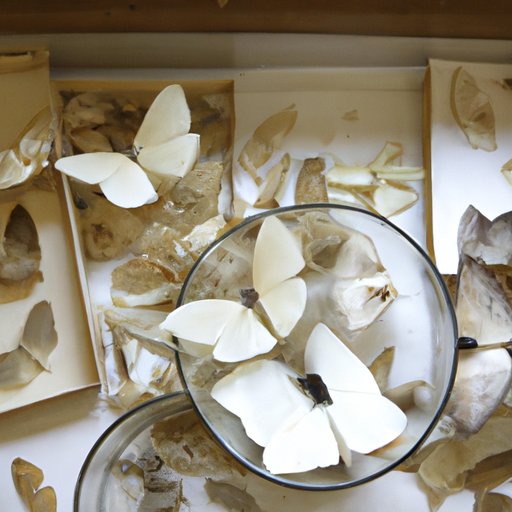Introduction
Have you noticed small holes on your clothing or pantry items being destroyed? You may have a moth problem. Moths are an invasive pest known for laying their eggs on clothing, linens and in pantries where they thrive in dark and humid environments. Fighting an infestation can be overwhelming, and it is important to address the problem as soon as possible to prevent further damage or potential contamination of your food. This article will explore various methods to get rid of moths, from natural remedies to professional pest control.
Natural Remedies
One of the most effective methods for getting rid of moths is through the use of essential oils. Lavender, cedarwood, and clove essential oils have been known to repel moths by their fragrance. You can place a few drops of these oils onto a cotton ball and put it into drawers, closets or pantries. Additionally, cedarwood balls and sachets are widely known for deterring moths due to its resinous scent. Lavender and cloves can also be used in sachets to protect clothing from moths.
Cleaning Routines
Regular cleaning is an excellent way to prevent a moth infestation. Cleaning routines not only disrupt the moth’s habitat but also remove any eggs and larvae present. The ideal cleaning routine includes wiping down shelves and surfaces with vinegar, as it acts as a natural disinfectant. Vacuuming is also an excellent way to remove any eggs and larvae that can be scattered throughout the carpet. Additionally, it is essential to check your clothing before storing them, especially if they have been stored for an extended period or if you have purchased them from a second-hand store, as they can also host larvae or eggs.
Proper Storage
The proper storage of clothing, linens, and pantry items is crucial. Moths are attracted to fabrics that have organic fibers such as wool, silk and cashmere, therefore ensuring proper storage techniques can prevent infestations. Placing clothing and linens in sealed bags will prevent moths from laying eggs on your garments. Pantry items such as rice, flour, and pasta should be stored in air-tight containers or resealable bags to prevent contamination by moths.
Traps and Repellents
There are many types of moth traps and repellents in the market that can help in the prevention of moth infestations. Sticky traps can capture adult moths, while pheromone traps are designed to attract males. These types of traps reduce the population of moths by disrupting the mating cycle. DIY traps can also be made by mixing sugar, flour, and vinegar to attract and lure the moths to a sticky surface.
Professional Pest Control
Professional pest control services are an option if the infestation becomes overwhelming or if it continues to persist after attempting to control it with natural remedies or traps. A pest control expert will have the knowledge and the equipment to eliminate the moth infestation and ensure that it does not occur again. Researching and selecting a reliable and experienced pest control company are essential in ensuring that the problem will be adequately addressed and the infestation eradicated.
Repairs and Maintenance
Preventing a moth infestation can be effectively achieved by sealing openings, cracks, and gaps in your home. Moths have a tendency to exploit small openings in the home, such as cracks in the foundation or holes in window screens. Sealing these areas increases the chances of preventing a moth infestation. Additionally, maintaining screens on windows and doors and repairing any holes will prevent moths from entering your home through these routes.
Prevention Tips
Preventing a moth infestation starts with good habits. Regular washing and drying of clothing, storing unused linens in sealed bags, and checking for moth larvae in grains and pantry items should be done consistently. Storing clothing in seasonal containers can prevent moths from laying eggs on unused clothing. Turning on lights in unoccupied rooms can also discourage moths from staying in those rooms due to the light.
Conclusion
Getting rid of moths requires a combination of natural remedies, regular cleaning routines, proper storage, and prevention techniques. The use of essential oils, natural repellents, and traps can significantly help in moth prevention. Ensuring adequate storage techniques and performing regular inspections for larvae and eggs removes moths opportunity to flourish. Regular cleaning in addition to repairing and maintenance and consulting with a pest control expert are all preventative measures to avoid infestations. Regardless of the extent of the problem, addressing a moth infestation as soon as possible is crucial to preventing any further damage.
